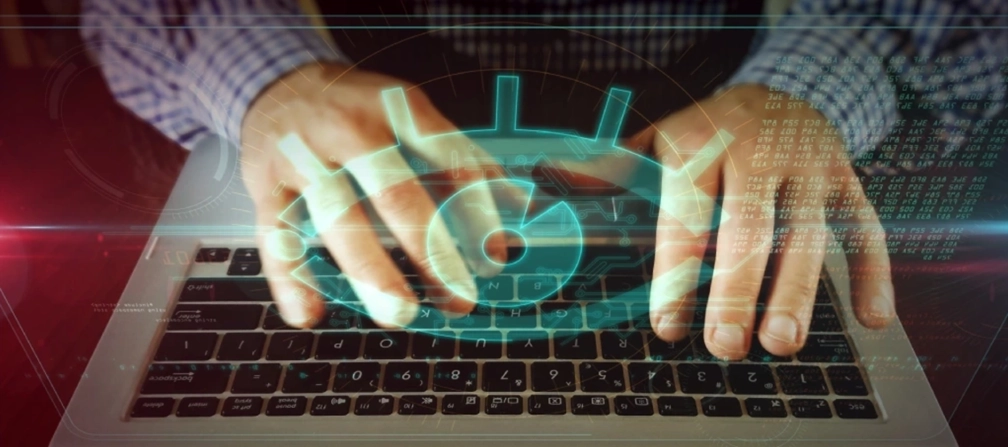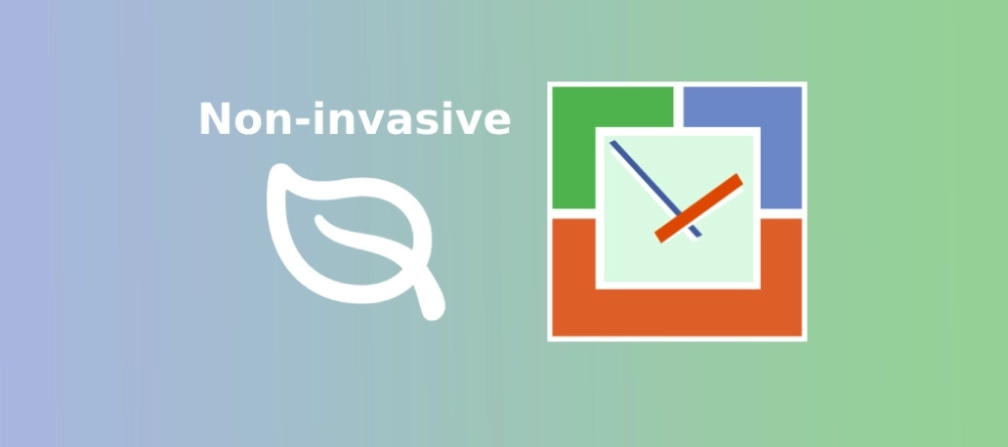Employee monitoring software for security & productivity
Why do you need to monitor your employees' computer activities? 1. Lost productivity 2. Intellectual property theft 3. Fraudulent activity 4. Legal liability Types of employee monitoring software 5. Application usage tracking 6. Internet activity tracking 7. Remote, hybrid & freelance employees monitoring 8. Performance evaluation 9. Benefits of using WorkTime employee monitoring Employee monitoring is essential to your risk management strategy: do it right! 10. Technology 11. ePolicy 12. Education 13. Management’s perspective and motivations 14. WorkTime reports provide valuable insights 15. Non-invasive employee monitoring software outside of work 16. ConclusionKey takeaways
While the internet has presented organizations with an extraordinary array of new opportunities, it has also presented them with an equally extraordinary array of new challenges – and risks. Whether an organization is a multinational corporation or a small family-owned company, misuse and abuse of the internet, e-mail, and instant messengers can impact staff productivity and result in potentially costly legal headaches. Employee monitoring identifies and prevents internal threats, training, and performance analysis. This information is used to improve employee performance and eliminate insider threats. Employee monitoring software tracks all computer activity - records running programs, websites, and correspondence in social networks throughout the working day. According to the latest studies, this method is implemented in approximately 80% of large and medium-sized companies in the United States. WorkTime employee monitoring software allows employers to track visited websites and launched apps in real-time, and creates reports detailing employee behavior and working habits, allowing managers unparalleled opportunities for labor productivity assessment. You can independently determine which applications and websites are considered productive and generate reports on their use by employees. You can compare employees and departments among themselves, identifying leaders and outsiders.Why do you need to monitor your employees' computer activities?
The monitoring of employees is commonplace. The majority of employers monitor employee arrival times. The majority monitor that cash has been handled correctly. The majority monitor the accuracy and quality of employees' work. Monitoring in this manner is accepted as a business necessity, and most organizations would consider it completely irrational not to make such checks. Yet, surprisingly, many organizations still do not adequately monitor how employees use their computers – and that can be an extremely costly omission. The misuse and abuse of computer equipment can have serious consequences for an organization:Lost productivity
Personal surfing has become an enormous problem for employers. Employees shop, gamble, play games, chat, watch and share videos and visit online red-light districts – all during working hours. Estimates on the amount of time lost to cyberslacking vary enormously, but most studies put it in the region of 2.5 hours per employee per day. Multiply that 2.5 hours by the number of employees and your organization's average hourly pay rate, and you will have a ballpark estimate of the cost of cyber slacking. It’s probably more than you thought, huh? Social networking site, Facebook, was recently dubbed a social not-working site after a study by security company Sophos revealed that 60% of its users accessed the site during working hours – and that more than 20% of its users accessed the site more than ten times each day during working hours. There are more than 51 million Facebook users, and that number is increasing by more than 200,000 per day. How many Facebooking cyberslackers are in your organization, and how much are they costing?Intellectual property theft
Intellectual property theft has always been a concern for companies – and internet-connected computers and mobile devices provide new opportunities for people to access and steal data. Documents and data can easily and speedily be transferred to a flash drive or laptop. Many organizations are concerned about outsider theft, but insiders commit the majority of thefts. A recent Carnegie Mellon University’s Software Engineering Institute study found that current staff members committed 75% of intellectual property theft. Companies often do not admit to being victims of IPT, so it is impossible to quantify the costs. The sums involved can, however, be considerable. In a recent DuPont research, a chemist admitted stealing $400 million of proprietary data from his former employer.Fraudulent activity
Employees often have access to sensitive personal information, which can either be misused by the employee or sold to a third party. HSBC customers had almost $500,000 stolen from their accounts after an HSBC employee passed on data to criminal associates. A US Social Security employee sold personal information used in a $2.5 million identity theft scheme. The cost of fraudulent activity extends beyond the losses incurred as a direct result of the fraud – the economic effects of the damage to an organization’s reputation and the loss of customer confidence can far outweigh the cost of the fraud itself.Legal liability
In most jurisdictions, employers hold some form of liability and accountability for the actions of their employees. According to the ePolicy Institute, 13% of employers have been faced with a lawsuit resulting from employees' improper use of proprietary data - and such lawsuits can be extraordinarily expensive. Petrochemical company Chevron was ordered to pay $2.2 million to settle a sexual harassment claim from inappropriate e-mails circulated by male employees. From multi-million dollar lawsuits and settlements to public embarrassment and public relations disasters to deliberate sabotage and industrial espionage, the list of risks to which organizations are exposed is practically endless. Monitoring your employees' computer activities is not a big brother tactic. It’s a responsible business and helps protect an organization and its stakeholders – including its employees.Types of employee monitoring software
Most employee monitoring solutions consist of three parts - “Grabber” or “Agent,” Server application, and the Viewer application is used to view the collected information. Some solutions use special equipment, such as a GPS tracker, motion sensors, and smart cards. However, the most common methods of studying employee behavior are:Application usage tracking:
By analyzing the use of applications on work computers, you will understand what employees spend their working time on, which applications are considered productive and which are not, and which documents and files are most often used by employees. As a result, the manager can decide to block or restrict access to topics or other applications, and the system administrator can determine unsafe ones.Internet activity tracking
According to the survey, about 65% of employees reported using the Internet during the working day for non-work purposes. To solve this problem, they use website tracking software and create black-and-white lists of URLs and IP addresses.Remote, hybrid & freelance employees monitoring
People tend to work remotely more and more often. Remote employees require special attention. They are often in other time zones and working on their own devices. This can create both security and payroll problems. WorkTime allows you to track working time, automatically estimate it, and assign special rules to control access to the organization's resources. Many companies use the services of freelancers permanently. Freelancers are the most serious security threat to the company because, according to VentureBeat, 54% of organizations breached through third parties in the last 12 months. Freelancers are very similar to remote employees. The difference is that they are informally organized and often located in other countries, so it is necessary to control their activities as much as possible. WorkTime will help you strictly limit and control the accounts of such users in your system.Performance evaluation
Your employees must work and earn their salary. It is necessary to know what staff spends their time on. In WorkTime, you can evaluate individual productivity.Benefits of using WorkTime employee monitoring
Improve productivity
How conscientious is the staff in their work? How much time do employees spend on social networks? Who among the employees of the department works better than others? The employee monitoring program will answer these and other questions. WorkTime monitors the employee's activity during the day and then processes the data, generating reports:- How many hours each day were spent on work and non-work tasks
- Which sites and applications are the least productive (you can block the least productive directly from the program window).
Get rid of routine
Managers and department heads are forced to spend a lot of time on routine tasks such as recording time worked, attendance, planning, calculating premiums and fines, etc. You can automate many of these tasks with the right HR tracking software. For example, with WorkTime, you can track working habits for the company as a whole, for a department, or individually for a user. The program automatically tracks attendance, breaks, working hours, absenteeism, and overtime. You will receive information about the amount of time worked and the work cost of working with freelancers. It is easy to identify effective and lagging employees.Get interested in work
Sometimes, even the most active employees can fail. The reason for this can be both motivation and excessive control, and lack of incentives. In this case, behavior analysis is necessary. The WorkTime system can monitor the activity of employees during the day. Having analyzed this data, you will be able to understand:- How many hours a day are your employees active?
- How much time do they spend in meetings?
- How long does business correspondence take?
- How often do they take breaks?
- How much time do social networks and games take?
Identify threats
An insider has access to internal information and resources. These can be employees, partners, freelancers, etc. An insider becomes a threat when he intentionally or accidentally puts the company in a dangerous position by creating data leakage, sabotage, fraud, theft, and others by abusing his level of access. Insiders often collude with each other or with third parties.Teaches the team to work honestly
When you use a personnel monitoring system on all computers in your company, you strive to create a single organization in which everyone is evaluated objectively and equally. Efficient employees will receive bonuses and promotions, and slackers will receive reprimands. This creates an atmosphere of fairness and transparency. It will be much easier for managers and leaders to focus on the main tasks and eliminate the routine.Employee monitoring is essential to your risk management strategy: do it right!
Monitoring employees should be regarded as something other than a panacea to previously discussed problems. To be effective, monitoring must be introduced as part of a risk management strategy that includes the following:Technology
Employee monitoring for web activity is useful from a performance perspective (ratio of productive/unproductive sites visited) and a learning perspective. Employee monitoring web activity is useful from a performance perspective (ratio of productive/unproductive sites visited) and a learning perspective. Employees who visit many job-related sites for a specific topic/skill may need training. WorkTime employee monitoring software can offer businesses more than revealing all the addresses employees visit during work hours. You can set up the web report to fit various needs. Imagine a media specialist who watches TikTok, while the default understanding of social media is that it is idle. With WorkTime, you can customize web reports to include customized lists of web resources useful for your business.Monitoring the application usage
This will show which apps are installed on the monitor device, which apps are running, and how much time the user spends. Application tracking can serve as a means of analyzing whether your team is over or under-licensed. Plus, you'll know if an employee installs unwanted software on a company-owned device. Within the WorkTime framework, you can customize the lists of apps that are considered “productive.” Why? Because thousands of businesses use millions of applications for a multitude of purposes. And you can list those that benefit your business, be that MsWord, or a freshly minted ChatGPT-infused editing tool. The point is that your employee monitoring reports are not a “one size fits all” useless data set but a valuable tool to leverage and modify your work processes to achieve your goals.Performance reports
Collecting activity data is only half the battle; you need to analyze it to determine the level of productivity and steps to improve it. Fortunately, the system will do the calculations for you, and you'll have neat charts and graphs by employee, department, or the entire team in no time. Performance reports made by WorkTime are exceptionally versatile and precise. You can customize the parameters to show the big picture on one screen and the in-depth layout of your business's productivity on another. You can pinpoint a single employee's exploits during a specific day and look at your enterprise's efficiency flow. Multiple “preset” reports exist; you can customize and set up your own.Remote employee monitoring
You do not need access to an employee's computer to get information about their performance and activities or to configure employee monitoring settings. Modern systems can provide logs in a variety of ways. For example, you can receive regular automatically generated reports via email, FTP, or file-sharing platforms. However, these methods have certain limitations, as they do not allow real-time employee monitoring of the screen. With the emerging shift to the hybrid working mode, remote employees have faced the need to somehow record and report their productivity on another level. Luckily WorkTime employee monitoring software is equipped to accommodate various cooperation models - on-site, remote, hybrid, outsourced - you name it. Besides, WorkTime has a “pre-set” report that showcases the measured productivity of the employees in different locations. You set up a list of IP addresses where the team works (office spaces, hubs, homes, coffee shops - anywhere). If you’re curious and prefer empirical data to generalized statistics, you can see which location produces more results.Email employee monitoring
It is another effective tool to minimize the risk of data leakage. It can also be used to evaluate quality, for example, by employee monitoring support agents or other employees who work with customers.Screen-viewer
Screen-viewer allows you to see the employee's screen as if you were sitting in front of them. Thus, you can check what any employee in your office (or all at once) is doing. Some programs boast a screen recording feature, so you can go back and review any minute of your work day. This overviews the most popular features in employee monitoring solutions, but the list needs to be completed. The set of functions may differ in different programs depending on the purposes for which they are intended. When choosing a solution for your company, we recommend defining your employee monitoring goal and looking for a program with the necessary features.ePolicy
Organizations should create an e-policy that covers e-mail, the internet, and applications, and that e-policy should be communicated to employees. An organization must create or communicate an e-policy to avoid exposing itself to many legal problems. In a case in the UK, IBM lost an unfair dismissal case brought by a former employee who had been sacked for using company computers to access pornography. The Tribunal decided there had been no clear breach of company policy, and the former employee was awarded compensation. To avoid such complications and potentially costly legal battles, an e-policy should:- Be communicated to staff in writing
- Clearly set out permitted and prohibited uses for email, internet, and applications o Specify the disciplinary consequences of breaching the e-policy
- Explain the employer’s right to monitor and explain what will be monitored
Education
The e-policy should be supported with a company-wide education program that sets out:- The reasons for the e-policy
- That compliance is mandatory o The conditions of the e-policy
- The consequences of non-compliance o The extent of monitoring
- Who an employee should approach with any questions about the e-policy
Management’s perspective and motivations
Workplace employee monitoring raises many ethical and social issues. However, to adequately address many of these issues, we must first consider the motivations behind management’s decision to employ monitoring technologies in the first place. While many reports emphasize the employee's risks, it is reasonable to assume that management may have legitimate reasons to monitor their employee’s actions in some instances. For example, profit-driven organizations aim to manage their business efficiently and productively. As such, it may be unreasonable to expect that such companies would not use methods or employ technologies to ensure that their employees are completing the job they are being paid. Furthermore, and perhaps more notably, According to “Analyzing Security, Trust, and Crime in the Digital World,” organizations continually face the risk of adverse publicity resulting from offensive or explicit material circulating within the company, and as such many employ monitoring technologies to protect themselves from costly litigation claims. The Internet has increased the possible threat of hostile work environment claims by providing access to inappropriate jokes or images that can be transmitted internally or externally at the click of a button. Moreover, a study by Forbes found that 64% of employees visit non-work-related sites daily. While the need to improve productivity is a common rationale for employee monitoring, other motivations, such as minimizing theft and preventing workplace litigation, can be considered equally justifiable in the eyes of management seeking to protect the organization's interests. The former motivation is particularly understandable as research shows that employees stole over 15 billion dollars in inventory from their employers. In addition, the seamless integration of technology into the workplace has increased the threat of internal attacks, noting the ease at which sensitive corporate data and trade secrets can be downloaded, transmitted, copied, or posted onto a Web page by an aggrieved employee. Internal attacks typically target specific exploitable information, causing significant damage to an organization. However, not all insider attacks are malicious by nature. Careless, negligent, or poorly trained employees unintentionally cause an equally high number of security breaches and data leaks each year. Crowd Research Partners currently estimate that companies now consider the equal likelihood that insider attacks directly result from accidental or unintentional breaches. The study suggests that 67% of accidental insider attacks are the direct result of a phishing attack, whereby employees are tricked into sharing sensitive information with someone they believe to be a trusted contact or a legitimate business partner.WorkTime reports provide valuable insights
The benefits of employee monitoring activity include improving employee productivity and ensuring compliance with business Entity policy. It also provides tips on effectively monitoring computer activity without infringing on their privacy rights. Many internet users are concerned about their online privacy and security. One way to help protect yourself is to monitor your computer activity and collect information about the sites you visit, the files you download, and the email correspondence you receive. While it may seem like much work, this information can be useful in several ways. First, it can help you identify patterns in your internet usage and determine which sites are most likely to pose a security risk. Second, it can help you keep track of your internet computer activity and ensure you are not inadvertently downloading or sharing sensitive information. Finally, this information can help improve your internet security by identifying vulnerabilities in your system.Non-invasive employee monitoring software outside of work
When discussing employee monitoring outside of work, a distinction should be made between employee monitoring and surveillance of employees outside the office building during working hours (for example, field workers) and employee monitoring during non-working hours. The first is quite acceptable - with some nuances, which we will explain in the following parts of this article. An employer may monitor field workers through various methods, including but not limited to- Location tracking.
- Control over the activity of devices belonging to the company
- Project management systems
- Time tracking software
Conclusion
Electronic monitoring in the computer-mediated work environment addresses all the issues that can be mitigated by management’s ability to monitor employee actions in the work-space. Management may have legitimate reasons to monitor employees’ actions in the workplace, but the employee's privacy rights cannot be ignored. In this way, it is paramount that some form of harmony or balance between the interests of the employer and the employee is achieved. Technology-enabled employee monitoring and tracking of employees is increasing both in terms of pervasiveness and sophistication. Both conceptual and operational confusion commonly besets employee monitoring empirical studies. This, in part, stems from the fact that the lines regarding correct and moral forms of behavior continually blur, thus limiting our overall understanding of the main issues involved and how to target them. Furthermore, using Internet-based technologies in the workplace allows businesses and employees to engage in behaviors for which comprehensive understandings or rules still need to be established. As such, WorkTime research and development team aims to alleviate this confusion by addressing these issues from a rigorous and relevant perspective. Moreover, a greater awareness of increased employee monitoring and the corresponding acuteness of information privacy concerns further indicate the need for non-invasive employee monitoring.CTA Check out what WorkTime can do for your business, by using a 14-day free trial!



